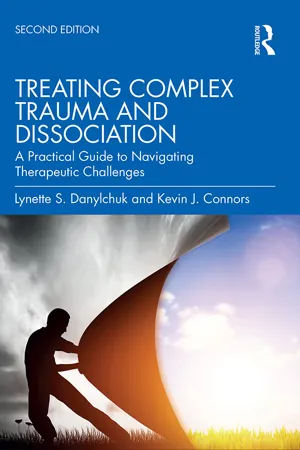
Treating Complex Trauma and Dissociation
A Practical Guide to Navigating Therapeutic Challenges
- 296 pages
- English
- ePUB (mobile friendly)
- Available on iOS & Android
Treating Complex Trauma and Dissociation
A Practical Guide to Navigating Therapeutic Challenges
About this book
Treating Complex Trauma and Dissociation is the ideal guide for the front-line clinician whose clients come in with histories of trauma, abuse, self-injury, flashbacks, suicidal behavior, and more.
The second edition includes the latest research and developments in treatment for trauma and dissociative disorders. The book is written with the knowledge that survivors may read it, and the authors have consciously maintained the dignity of the survivors throughout. Clinicians will find that the chapters help them develop their own responses and practical solutions to common questions, including "How do I handle this?" "What do I say?" and "What can I do?"
Treating Complex Trauma and Dissociation is the book clinicians will want to pick up when they're stuck and is a handy reference that provides the tools needed to deal with difficult issues in therapy. It is supportive and respectful of both therapist and client, and, most of all, useful in the office.
Frequently asked questions
- Essential is ideal for learners and professionals who enjoy exploring a wide range of subjects. Access the Essential Library with 800,000+ trusted titles and best-sellers across business, personal growth, and the humanities. Includes unlimited reading time and Standard Read Aloud voice.
- Complete: Perfect for advanced learners and researchers needing full, unrestricted access. Unlock 1.4M+ books across hundreds of subjects, including academic and specialized titles. The Complete Plan also includes advanced features like Premium Read Aloud and Research Assistant.
Please note we cannot support devices running on iOS 13 and Android 7 or earlier. Learn more about using the app.
Information
Table of contents
- Cover
- Endorsements
- Half Title
- Title Page
- Copyright Page
- Table of Contents
- List of illustrations
- Preface
- Acknowledgements
- PART I: Understanding Trauma and Dissociation
- PART II: Complicating Factors
- References
- Index